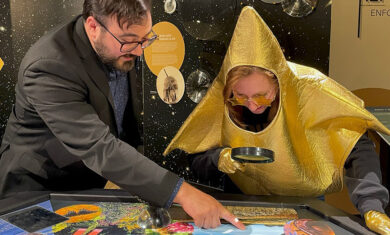The Magic Behind Planetarium Domes
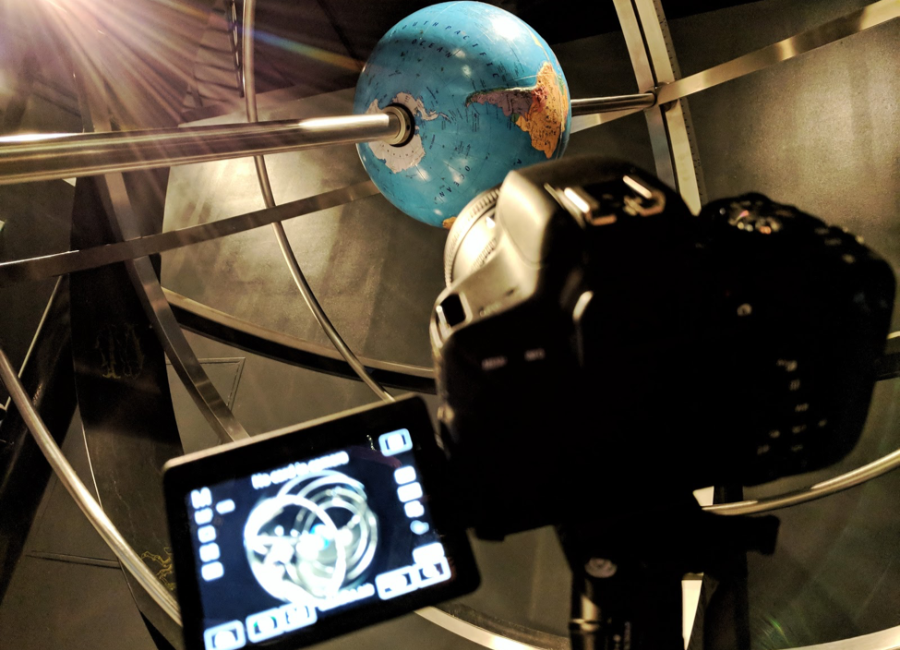
Hi, I’m Nick Lake, Presentation Leader & Theater Technician here at the Adler Planetarium. Today, I’d like to talk about our planetarium theaters, specifically the domes, and how we use planetarium software to transport viewers to new worlds.
For me, the most exciting thing about planetarium domes is the ability to make the audience feel like they are really transported to far away places. As an example, for our monthly Yoga Under the Stars program, I make the most of this capability, transporting our yoga guests all around our Universe. During one pose, participants are on the surface of the Moon. In the next pose, they are on a Norwegian mountain top viewing the northern lights. After that, they’re in Mars’ orbit, looking down at the cavernous Mariner Valley.
It’s a lot of fun playing around with different landscapes, symbolically shrinking the audience down, allowing them to gain a different perspective from what they would experience in the everyday world.
To show you how we prepare an image for the dome, I’m going to use this armillary sphere located near the Adler’s Telescopes: Through the Looking Glass exhibition. I want to make the audience feel like they’ve been transported inside this piece.
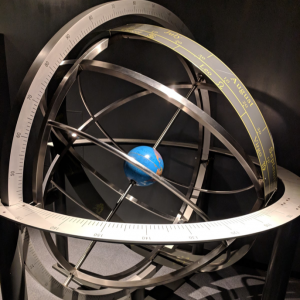
To capture the shot, I use a camera equipped with a circular fisheye lens, which captures a hemispherical image that will map easily to the shape of the dome in our Grainger Sky Theater. This image shape helps me imagine the shot and how it will look when the audience is “standing inside it.”
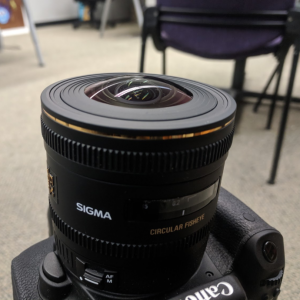
As I prepare to capture the shot, I have to remember when framing the image that the center of the picture will appear directly above the audience’s head and therefore be hard to see unless you crane your neck upward at a potentially uncomfortable angle. This is because the direct center of the planetarium dome is not the focal point for audiences. Rather, the focal point is off center and halfway down from the center of the dome.
In order to make sure that the focal point of my image appears on the correct part of the dome, I need to adjust the shot so that it appears more toward the bottom center of my image. In this case, I want the Earth globe in the center of the armillary sphere to be the focal point and I’ve adjusted the camera accordingly.
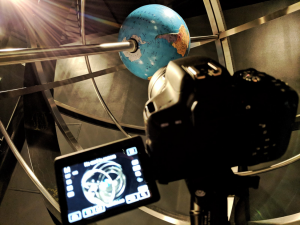
Once the image is captured, it’s time to upload it to our planetarium software. The Grainger Sky Theater has six projectors, each connected to four computers. Each of these computers needs a copy of the image so it is able to produce its portion when called upon. Copying the entire image to each computer (instead of copying just one section) allows for the fulldome image to be rotated, flipped, etc., in real time during the presentation. (Yes, for yoga the show is run manually, giving some extra flexibility and versatility)
Thankfully, our planetarium software takes care of the complex math in this next step. (Phew!) It pieces together the individual images, making them appear like one seamless image across the dome of the theater.
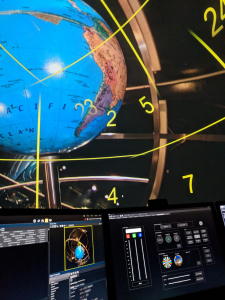
Once the software has done the math—voila!—you’ve been transported. Here I am standing in the Grainger Sky Theater looking up from “inside” our armillary sphere!
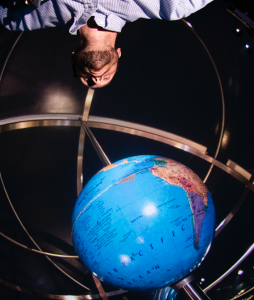
Our image works really well! And you can see it for yourself at home using this VR/360 view on your mobile device!
The planetarium dome is an amazing canvas full of challenges and opportunities. Next time you’re planning a trip to the Adler, consider Yoga Under the Stars, which happens every first Saturday of the month. Then you can watch the magic unfold on the dome for yourself, all while enjoying a relaxing morning wake up!




